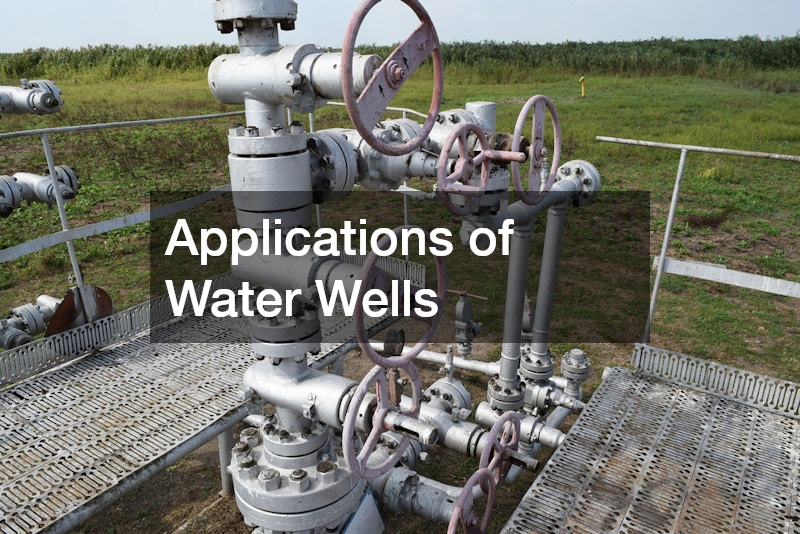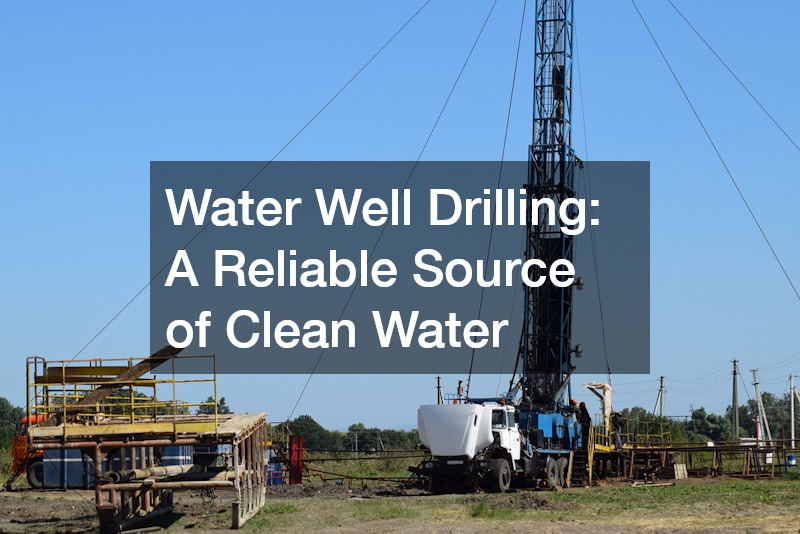
Water is one of the most valuable resources on Earth, and access to a clean, reliable source of it is critical for homes, farms, and businesses alike. In many parts of the country, especially rural areas, water well drilling offers a dependable way to secure a private supply of fresh water. This process, while rooted in centuries-old practices, has evolved into a sophisticated and essential service that combines science, engineering, and environmental stewardship.
What Is Water Well Drilling?
Water well drilling is the process of creating an opening in the ground to access underground water reserves, commonly referred to as aquifers. These aquifers are natural formations of rock, sand, and gravel that store and move water. Drilling allows communities, property owners, and agricultural operations to tap into these reserves, ensuring a steady flow of usable water for daily needs.
Unlike surface water sources such as rivers, lakes, or ponds, groundwater is often cleaner and more reliable because it is naturally filtered as it moves through soil and rock. A properly constructed well can provide water for generations, making it a long-term solution to water access.
The Steps Involved in Drilling a Water Well
The process of drilling a water well requires planning, specialized equipment, and skilled professionals. While techniques may vary depending on location and geological conditions, the main steps generally include:
-
Site Assessment and Planning
The first step is identifying the best location for drilling. Professionals conduct surveys and evaluate the landscape to find a spot where groundwater is abundant and accessible. They consider factors such as soil composition, rock layers, and the depth of nearby wells to ensure success. -
Drilling the Borehole
Once a site is selected, drilling equipment is brought in. Modern rigs use rotary drilling or cable-tool methods to bore deep into the ground. This stage requires precision, as the drill must penetrate layers of soil, rock, and gravel until the aquifer is reached. -
Installing the Casing and Screen
After reaching the water-bearing layer, a casing (typically made of steel or durable plastic) is inserted into the borehole. This casing keeps the well walls stable and prevents contaminants from entering. A screen is often added at the bottom to filter out sand and sediment while allowing water to flow freely. -
Sealing and Grouting
To protect the well from surface contamination, the space between the casing and borehole wall is sealed with grout. This step ensures the water remains clean and safe for consumption. -
Well Development and Testing
Once the structure is complete, the well is developed by flushing out fine particles and ensuring proper water flow. Pump tests are performed to measure the yield, or the amount of water the well can produce consistently. -
Pump Installation
Finally, a pump system is installed to bring water to the surface. The type of pump used depends on the well’s depth and the intended water use.
Benefits of Having a Private Well
Drilling a water well provides several important advantages beyond simply having access to water:
-
Independence: A private well reduces reliance on municipal water systems, which can be subject to shortages or restrictions.
-
Reliability: Wells tap into groundwater, which is less likely to dry up than surface water sources during dry seasons.
-
Quality: Groundwater is naturally filtered, often resulting in cleaner and fresher water than what is available from surface sources.
-
Sustainability: With proper maintenance, a well can provide a continuous water supply for decades.
Environmental Considerations
Responsible water well drilling goes hand in hand with protecting the environment. Careful site selection prevents overuse of aquifers and avoids contamination of local ecosystems. Professionals often follow state and federal guidelines to ensure sustainable water use. In addition, ongoing monitoring and water testing help maintain safety and environmental balance.
It is also important to remember that aquifers are shared resources. Overpumping in one area can affect water availability in neighboring regions. For this reason, professional drillers prioritize sustainable practices to balance human needs with environmental health.
Maintenance and Longevity
A water well is a long-term investment in reliability, but it requires ongoing attention. Regular inspections, water testing, and maintenance of the pump system are essential. These practices help detect issues early, such as bacterial contamination or mechanical problems, ensuring the well continues to provide safe, dependable water.
Some common maintenance steps include:
-
Annual water testing for quality and safety.
-
Routine inspection of the pump and electrical components.
-
Checking the wellhead for cracks, damage, or potential contamination risks.
With consistent care, a well can serve a property for generations.
Applications of Water Wells
The uses of water wells extend far beyond residential supply. They play a vital role in:
-
Agriculture: Farmers rely on wells to irrigate crops and water livestock.
-
Industrial Operations: Certain industries require large volumes of water for manufacturing processes.
-
Community Needs: Rural towns often depend on shared wells to provide safe drinking water.
-
Emergency Preparedness: Private wells can offer an added layer of security during natural disasters or disruptions to municipal systems.
Water well drilling remains one of the most practical and sustainable ways to secure access to fresh water. From rural households to large-scale farms, wells provide a dependable source that is vital to daily life. The process requires planning, precision, and professional expertise, but the outcome is a reliable system that can serve generations.
As communities continue to grow and demand for water increases, the importance of responsible well drilling cannot be overstated. By combining modern technology with sustainable practices, today’s wells not only meet human needs but also safeguard the environment for the future.

